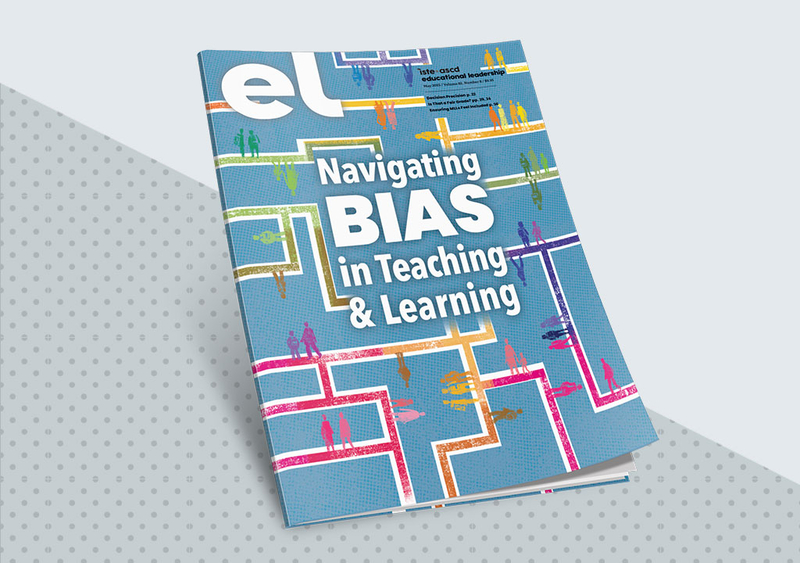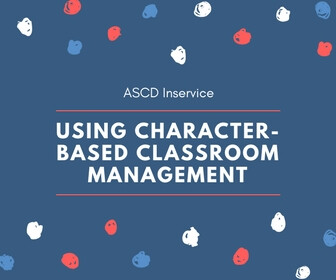Bias affects testing whenever diverse student populations are assessed. But what exactly is test bias? It occurs when we see systematic score differences between student groups that stem from factors unrelated to the knowledge or skills being measured.
Consider this example: If girls who perform similarly to boys on overall math assessments consistently score lower on specific math items, it may indicate that those items reflect gender bias. And remember—bias doesn't just appear in standardized tests. It can just as easily surface in the classroom assessments we create and use daily.
Understanding what causes test bias and how to identify it empowers K-12 educators and school leaders to think more critically about classroom assessments and standardized test results, recognize limitations in commercially available testing materials, better interpret the scores tests produce, and reflect on how personal beliefs might unconsciously influence teaching and assessment practices.
By examining how bias operates in testing, we can work toward more equitable assessment for all students.
When Test Content Creates Barriers
Test bias disproportionately impacts female students and those from underrepresented groups—including racial, ethnic, and socioeconomic groups, as well as students with disabilities and English learners. It's important to note that different average scores between groups don't automatically indicate test bias. Researchers identify true bias when score differences persist even after accounting for actual differences in achievement levels. In other words, if two groups perform differently on a specific test question, but similarly on the test as a whole, that question may contain bias.
By examining how bias operates in testing, we can work toward more equitable assessment for all students.
Understanding the different components of assessments can help educators identify the various ways within test questions where bias might enter:
- Language Elements: Words, phrases, idioms, expressions, and linguistic structures used in test instructions and questions.
- Visual Components: Illustrations, charts, graphs, diagrams, and other non-textual elements incorporated into assessment items.
- Contextual Scenarios: Word problems, real-world situations, and narrative contexts that frame questions (like "Johnny needs to buy 11 pencils costing 37 cents each").
Some test elements are essential to what's being assessed (like chemical formulas in a science test), while others are not. For example, let's consider this sample analogy problem from the SAT:
RUNNER:MARATHONA. envoy: embassyB. martyr: massacreC. oarsman: regattaD. referee: tournamentE. horse: stable
This analogy question is intended to assess logical reasoning skills, but it requires familiarity with regattas—an activity typically associated with upper middle-class communities. According to researcher John Weiss, 53 percent of white examinees and 22 percent of Black examinees responded correctly to this question (Option C). Arguably, the item appears to measure “knowledge of an upper middle-class recreational activity” rather than logical reasoning skills.
Let's look at another example from a reading assessment:
"Harold spoke of his morning at the barber, his time shopping at the mall, and his lunch at the park. He had an innate ability to beat around the bush." Explain what is meant in the passage by beat around the bush.
While this reading item appears to be intended to assess how students infer the meaning of an unfamiliar phrase from the surrounding text, it does not provide clear context clues within the item text that reveal the meaning of the phrase. The answer "may or may not be known to students based on their own experience." Anyone who has learned English as a second language knows that idioms, in particular, are hard to use.
In both of these sample test questions, the items create an unfair advantage for students familiar with specific contextual knowledge, rather than measuring the intended academic skills.
Bias and Classroom Assessment
Fair representation of students is critical. Keeping fair representation in mind is key to properly using state and commercially available tests and improving formative assessment practices in the classroom. Teachers continuously adjust their instruction based on formative assessment data gathered through classroom conversations, discussions, and quizzes. However, these interactions can be influenced by unconscious biases about student abilities based on background characteristics.
For example, a teacher might call on English learners less frequently during class discussions, incorrectly assuming they cannot fully participate in English-language conversations. This creates a form of assessment bias, as the teacher's instruction becomes responsive primarily to students with whom they more frequently interact, potentially overlooking the learning needs of others.
The best check against bias remains thoughtful educators who know their students well and approach assessment with both rigor and cultural sensitivity.
Another example of biased instruction and classroom assessment concerns the amount of time a teacher waits for a student to think and respond to a question before asking the same question to another student. During a classroom conversation in a mathematics lesson, a teacher may give, on average, less wait time to girls than boys to answer questions. This difference may reflect lower expectations for girls than boys about students’ ability to solve mathematics problems. Giving students equal opportunities to participate in all classroom activities and giving them the same level of attention are simple but powerful strategies for minimizing bias in classroom assessment.
Strategies for Recognizing and Reducing Test Bias
Beyond ensuring equitable participation in classroom activities, educators can implement these additional practices to identify and minimize assessment bias:
- Diversify review processes: When selecting or creating assessments, involve colleagues with different backgrounds and experiences to review content. Consider how questions might be interpreted by students from various cultural, linguistic, and socioeconomic backgrounds.
- Analyze performance patterns: Examine whether specific questions consistently show performance gaps between student groups that don't align with their overall achievement. These patterns often signal bias rather than knowledge differences.
- Refine contextual elements: Be mindful that "real-world" scenarios meant to make questions relatable may disadvantage students without specific cultural experiences. Ensure contexts are universally accessible or provide necessary background.
- Simplify language without simplifying content: Reduce linguistic complexity that isn't essential to what you're measuring. Avoid idioms, colloquialisms, and unnecessarily complex sentence structures when they're not the target skill.
- Solicit student feedback: Create opportunities for students to explain their thinking when answering questions. Their explanations may reveal interpretation differences that point to unintended bias in your assessments.
Even as testing companies incorporate new technologies like AI into assessment design, remember that these tools require the same critical review as traditionally created assessments. The best check against bias remains thoughtful educators who know their students well and approach assessment with both rigor and cultural sensitivity.
Moving Toward Equitable Assessment
Bias remains a persistent challenge to fair testing, reflecting broader social inequalities. Addressing test bias isn't about making tests easier for underrepresented groups—it's about ensuring accurate measurement of what all students know. Though difficult to detect, bias can be minimized through inclusive practices at every stage of assessment design and use. By critically examining the tests we use and create, we gain clearer understanding of student learning and take an essential step toward providing equal educational opportunities for all students.
Navigating Bias in Teaching and Learning
A nuanced look at how entrenched biases can affect learning systems and how educators can identify and address them.









